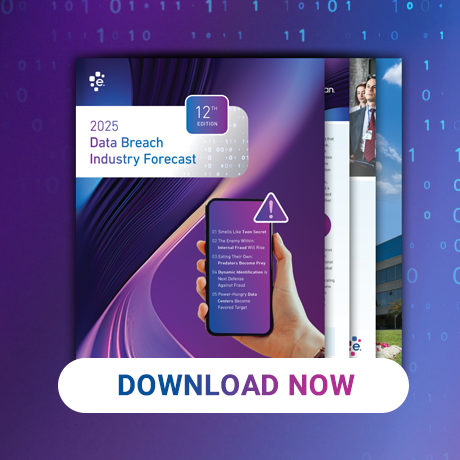
In a financial world that’s increasingly connected and complex, monitoring transactions is not just good business practice — it’s a regulatory necessity. Anti-money laundering (AML) transaction monitoring stands as a crucial barrier against financial crimes, which ensures the integrity of financial systems worldwide. For financial institutions, the challenges of AML compliance and the tools to meet them continue to evolve.
In this blog post, we’ll walk through the basics, best practices, and future of AML transaction monitoring.
What is AML transaction monitoring?
AML transaction monitoring refers to the systems and processes financial institutions use to detect and report potentially suspicious transactions to the Financial Crimes Enforcement Network (FinCEN) under the United States Department of Treasury, which spearheads the efforts to track financial crimes — money laundering and financing of criminal or terrorist activities. By continuously monitoring customer transactions and establishing patterns of behavior, suspicious activities can be identified for further investigation.
The role of AML transaction monitoring
AML transaction monitoring identifies potential criminal activities and helps maintain a clean and efficient financial ecosystem. By being proactive in preventing the misuse of services, organizations can protect their reputation, strengthen customer trust, and uphold regulatory requirements.
The challenge of false positives
However, AML compliance is not without challenges. The systems in place often produce many ‘false positives’, transactions identified as potentially suspicious that, after investigation, turn out to be mundane. These false alarms can overwhelm compliance departments, leading to inefficiency and potentially missing real red flags.
Why is AML transaction monitoring important?
Understanding the importance of AML transaction monitoring requires a broader look at the implications of financial crimes. Money laundering often supports other serious crimes such as drug trafficking, fraud, and even terrorism. The ability to interrupt the flow of illicit funds also disrupts these additional criminal networks.
Furthermore, for organizations, the cost of non-compliance can be substantial — financially and reputationally. Penalties for inadequate AML controls can be hefty, signaling the need for robust monitoring systems.
Specifics on compliance
Compliance with AML regulations is not a choice but a must. Financial institutions are required to comply with AML laws and regulations to protect their businesses and the industry as a whole. This includes understanding and adhering to regulation changes, which can be complex and have significant operational impacts.
How does AML transaction monitoring work?
There are two main approaches to transaction monitoring:
- Rule-based systems: These rely on pre-defined rules that flag transactions exceeding certain thresholds, originating from high-risk countries, or involving specific types of activities.
- Scenario-based systems: These use more sophisticated algorithms to analyze transaction patterns and identify anomalies that might not be captured by simple rules. This can include analyzing customer behavior, source of funds, and the purpose of transactions.
Most organizations use a combination of both approaches. Transaction monitoring software is a valuable tool, but it’s important to remember that it’s not a foolproof solution. Human analysis is still essential to investigate flagged transactions and determine if they are truly suspicious.
Implementing AML transaction monitoring solutions
Implementing a robust AML transaction monitoring system requires the right technology and the right strategy. Beyond the software, it’s about embedding a culture of compliance within the organization.
Choosing the right AML solution
The right AML solution should be based on the specific needs of the institution, the complexity of its operations, and the sophistication of the fraud landscape it faces. It’s imperative to pick a solution that is agile, scalable, and integrates seamlessly with existing systems.
Leveraging KYC and CIP programs
Know your customer (KYC) and customer identification program (CIP) are deeply connected to transaction monitoring. Implementing a robust KYC program helps to establish a strong customer identity, whereas a solid CIP ensures that essential customer information is verified at the time of account opening.
Automation and AI in AML compliance
Automation and AI are revolutionizing AML compliance, especially in transaction monitoring. AI systems, with their ability to learn and evolve, can significantly reduce false positives, making the compliance process more efficient and effective.
Advanced AML solutions and the future
Technological advancements are constantly reshaping the AML landscape, including solutions incorporating big data analysis and machine learning.
- Utilizing big data for better insights: Big data analytics provides an unprecedented ability to spot potential money laundering by analyzing vast amounts of transactional data, allowing for better contextual understanding and the ability to identify patterns of suspicious activity.
- Machine learning and predictive analytics: Machine learning technologies have the potential to refine transaction monitoring by continuously learning new behaviors and adapting to evolving threats. Predictive analytics can help in identifying potential risks well in advance and taking pre-emptive actions.
The human element in AML
Despite the advancing technology, the human element remains crucial. AML systems are only as good as the people who operate them. Organizations must invest in:
- Continuous training and skill development: Continuous training ensures that employees remain updated on regulations, compliance techniques, and the latest tools. Developing a team with AML expertise is an investment in the institution’s security and success.
- Cultivating a compliance culture: Cultivating a corporate culture that values compliance is vital. From the highest levels of management to front-line staff, a mindset that embraces the duty to protect against financial crime is a powerful asset in maintaining an effective AML program.
How we can help
As a leader in fraud prevention and identity verification, Experian’s AML solutions can help you increase the effectiveness of your AML program to efficiently comply with federal and international AML regulations while safeguarding your organization from financial crime. We provide data, models, and automated systems and processes to monitor, detect, investigate, document and report potential money laundering activities across the entire customer lifecycle.
*This article includes content created by an AI language model and is intended to provide general information.


